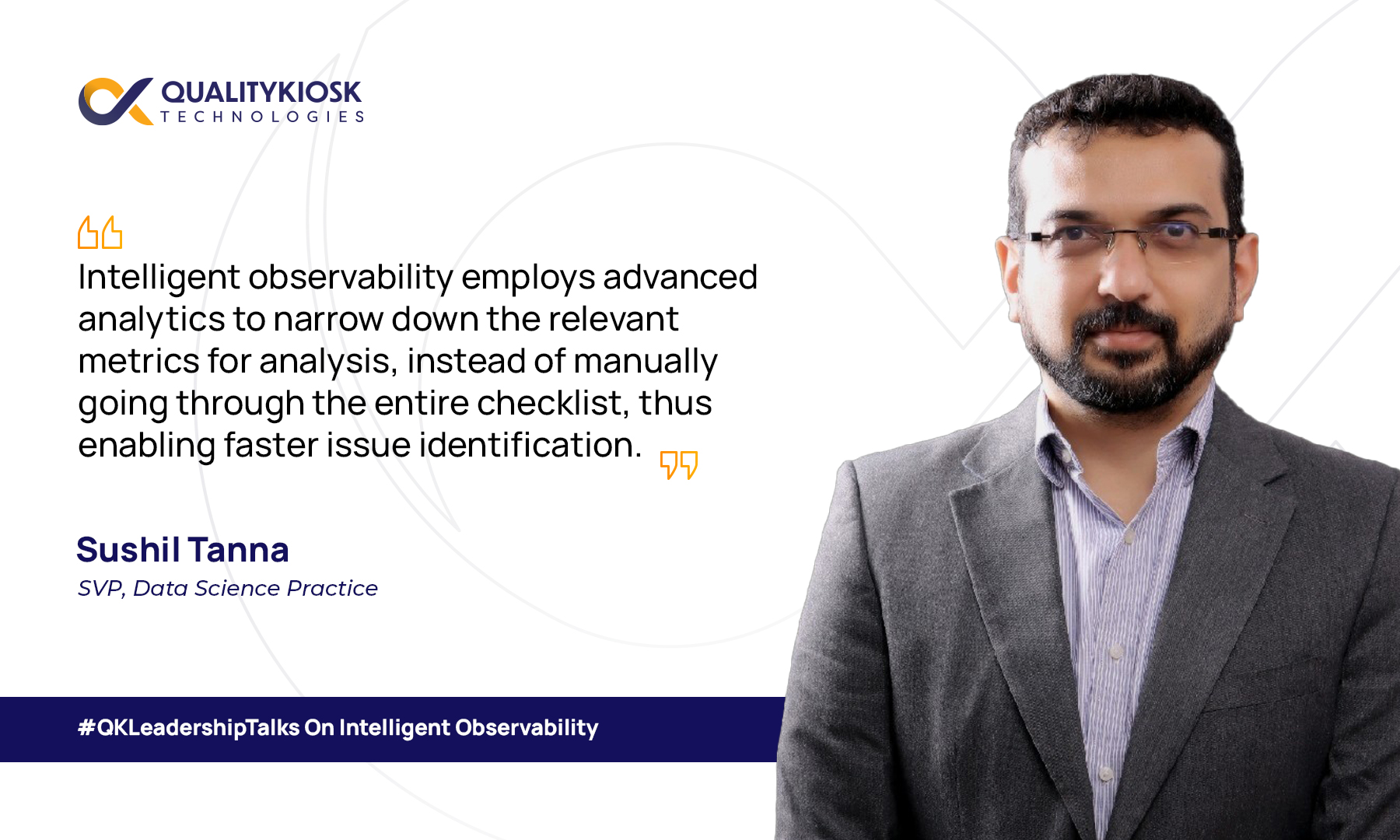Beyond Monitoring: Mastering Intelligent Observability with Data-Driven Insights
Seamless operation of critical systems is paramount in the intricate and dynamic banking ecosystem. However, post-incident resolution continues to puzzle many IT professionals.
Today, let’s not discuss the same old troubleshooting techniques but delve into the world of Intelligent Observability—a paradigm that has the potential to redefine incident resolution methodologies.
Navigating the complexities of incident resolution
When technical incidents occur, the race to identify the root cause begins. While reliable, traditional approaches to dissecting incident complexities are time-consuming and often lead to ambiguous results, which can disrupt business operations.
Intelligent observability does not rely on human guesswork for incident investigation but uses advanced analytics and AI to find patterns in the chaos. It smartly and accurately narrows down the possible reasons for the problem to identify the root cause.
Think of it like being on a quiz where you’re given multiple-choice questions. You start eliminating the wrong options until you’re left with the correct answer. Intelligent observability employs advanced analytics to narrow down the relevant metrics for analysis instead of having to go through the entire checklist manually – thus enabling faster issue identification. This pinpointing reduces the Mean Time to Identify (MTTI), incident analysis, and resolutions, ultimately minimizing downtime.
What is Intelligent Observability in Banking Payments
Consider a situation where a payment processing issue disrupts a banking system. In an AI-driven observable environment, we don’t just focus on a single layer but go through multiple dimensions across banking infrastructure simultaneously. This multi-dimensional approach involves understanding how the application behaves, how data flows across the network, and how end users interact with the system. By combining these perspectives and a comprehensive picture, you can reveal the root cause clearly.
Now, intelligent observability is not just a beneficial tool for technical experts, it also improves end users’ satisfaction. When an incident occurs, users often experience frustration and uncertainty. By identifying and relaying the problem quickly to users, technical teams can increase transparency, build trust, and enhance user satisfaction.
Use Case: Payment Observability
Let’s explore a payment processing scenario to illustrate how IO works. A bank experiences a sudden delay in processing payments, impacting customer transactions. With traditional methods, diagnosing the issue could take hours. However, with intelligent observability solutions:
- Detect unusual payment processing delays and identify incidents promptly
- Collect data from the application, network logs, and user behavior in real time
- Use advanced algorithms to analyze the data and narrow down possible root causes
- Pinpoint the root cause – like a network latency issue – for prompt resolution
The payment observability use case demonstrates the tangible benefits of intelligent observability’s streamlined process: MTTI is significantly reduced, minimizing downtime and preserving operational efficiency.
A New Era of Incident Resolution
Investing in intelligent observability solutions brings optimal outcomes for tech investments, scaling platforms while identifying bottlenecks. As incidents arise and complexities grow, IO offers a promising solution to streamline processes, enhance user experiences, and maintain the seamless operation of critical systems. It also safeguards business continuity and paves the way for tech-driven success.
QualityKiosk has been working with BFSI clients for more than 23 years. Our domain expertise, experienced data analysts, and performance engineering teams are equipped to navigate the intricacies of the banking sector. Reach out to us and start your journey toward intelligent observability today.
About the Author


Sushil Tanna is the Senior Vice President of the Data Science Practice at QualityKiosk Technologies, where he leads R&D, strategic accounts, and engineering initiatives. He has over 20+ years of experience in IT and application data management (ADM) optimizations. Sushil has conceptualized, designed, and headed the team that developed AnaBot, an in-house analytics platform. He has worn multiple hats in the past as Head of Presales & Consulting, R&D – Performance Engineering, Development Lead, and QA Lead.



